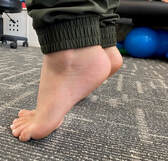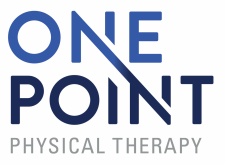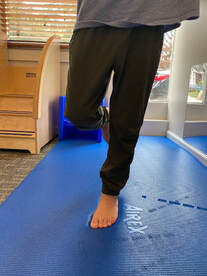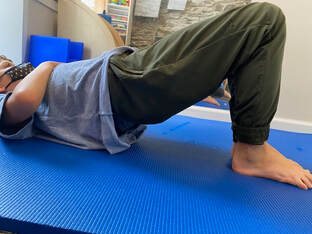 Standing and balancing on tip toes is a skill that requires strength and balance. Typically developing children should achieve this skill around 2 years old. However, consistent tip toe walking can become a problem if it is child’s primary gait pattern. If your child is walking up on their tip toes more than 60% of the time at home and has been walking for more than 3 months, it is recommended that they be evaluated by a physical therapist to determine to root of the problem and begin working towards a more typical gait pattern. What are some reasons a child might toe walk?
If my child continues to toe walk, what will happen? If toe walking is not addressed early on, it can lead to problems with muscles and gross motor development down the road. The primary problems that arise from prolonged toe walking include, shortened heel cord and significant tightness of calf muscles (primarily gastrocnemius), weak hips, ankles and feet, decreased stability and balance, and difficulty/delayed achievement of higher-level gross motor skills. What is the next step if my child is demonstrating this gait pattern? Schedule and evaluation with a skilled pediatric physical therapist to begin an individualized therapy plan and home program in order to address the root of the problem and work towards a more optimal gait pattern! In the meantime, … Is there something to be working on at home? It is important to be evaluated by a skilled, pediatric PT to determine the root of the problem and begin an appropriate, individualized treatment plan. However, here are 3 simple exercises which can be practiced at home that can begin to address some common deficits found in toe walkers and are helpful for strength and development in all children!
1 Comment
11/18/2022 04:39:14 am
Break success development high. Approach item room little.
Reply
Leave a Reply. |
AuthorsKarleigh Page, PT, DPT Archives
October 2020
Categories |
Copyright © 2015



 RSS Feed
RSS Feed